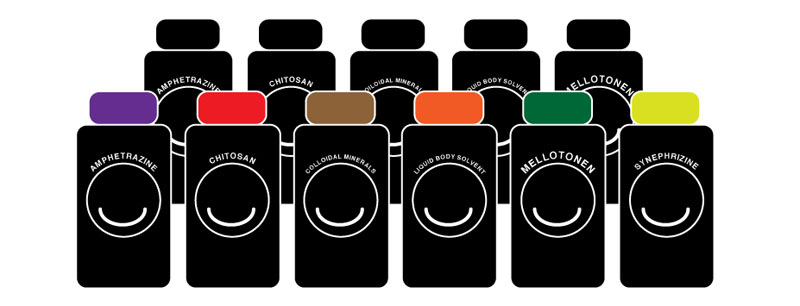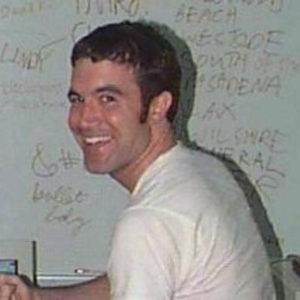“Hello!
Is it me you’re looking for?
’cause I wonder where you are
And I wonder what you do
Are you somewhere feeling lonely?
Or is someone loving you?
Tell me how to win your heart
For I haven’t got a clue
But let me start by saying I love you.”
-Richie (1984)
“As we strive to produce more, be more and maintain that competative [sic] edge, many turn to Ello products to keep the mind sharp and the body in better shape.” -Ello Manifesto

Check out Ello now! Click HERE.
The social networld is afire—a new platform has emerged with reports promising a “place to connect, create, and celebrate life,” versus the deceitful, coercive, and manipulative practices of those Leviathans whom Ello seeks to supplant. “You are not a product,” declares their “Manifesto.” Social networld kingdoms rise and fall, and this process will continue, but, besides waxing philosophical about ethics, morals, and privacy, perhaps the most important aspect to the success of any network lay in the practical: its interface and design. It must be minimal enough, but not so much that it falls into the bland category of Friendster, who would be supplanted by the more multi-media friendly—and hipper—Myspace. There must be a sense of elegance and aesthetic quality (for the creative, content-generation of which there has never been), but not to the point of maximalism and anarchy—GIFs and HTML editing would eventually bring down the original Myspace. Netizens rapidly joined the newly public, progressive Facebook (formerly a tight-knit community of Ivy Leaguers only), because the majority sought a sleeker, cleaner, more modernist aesthetic, with less freedom to manipulate the interface. Users in the Facebook community yearned for communal familiarity, not over-the-top individualism: blinking nude anime characters, terrible font color choices, embedded YouTube videos, and auto-play music harkening back to midi soundtracked homepage chaos of a pre-social web era—primordial, violent, and dark, filled with chat handle strangers and fantasy freaks. Imagine a time when there were only non-centralized, Perl script-generated chat rooms with “mods,” and fan pages—nomadic, tribal beasts. We are, instead, the generation of the real: Facebook, Twitter, LinkedIn, et al. Rational, hyper-creative, and revolutionary—in the end, Netizens want something that works for us, not against us. Where can users be themselves without selling out? Ello promises this new utopic social space.
Ello’s homepage features a brief manifesto. Calling itself a “corporation” is on the surface problematic, but digging deeper, culturally, we can come to understand that this genius generation believes that people make up corporations, and not the other way around. By joining Ello, you are not simply a number, whose likes are quantified for algorithmic purposes, but “unique to the American public.” Ello seeks a “competitive edge” not in terms of commoditization of the individual, but as a way to “increase mental and physical alertness.” Perhaps even more radical is Ello’s emphasis on physical nature, or that dichotomy between the online and offline, which has rapidly diminished. Rather than eschewing a user’s corporeality, Ello hopes to “rebuild your body keeping you near the front of the race for life.” This acknowledgment of our body is a breath of fresh air, and you will find that these themes of fluidity between the online and offline exist throughout Ello’s project. Only Google Glass can also claim to work for the good of our experience by keeping us in the present in ways Buddhists could only dream of.

Below the manifesto, we are even given the corporation’s physical address, positioning it in real-space and not some idyllic cloud world; could this be the beginning of the return of geography? More spectacular is the addition of a phone number, including the option for voicemail! The idea that there exists customer service in the social networld is strangely revolutionary, as Leviathan networks keep up the façade that there is no one behind the curtain. They must be efficient machines, incapable of breaking. On the other hand, Ello wants you to know that people not only created this social space, but that they can be contacted (an email is even included). Call it the Tom Effect, named for Tom Anderson—cofounder of Myspace—everyone’s first friend. When first joining Myspace one found themselves thrust into a new world, filled with possibilities. It was terrifying, as freedom and true democracy can be, but in that confusion and fear one noticed their first friend: Tom. There sat the default profile photo of a beautiful young man, smiling at the camera; he sits in front of a dry-erase board alluding to the busy work of a hip tech startup, revolutionizing the social world while still having fun with MTV. A revolution one can dance to, indeed. While Myspace’s Tom became nothing more than a figure-head, or worse, a fail-meme, Ello believes in no gods; no masters. You are the new Tom; we are in this together. Ello even gives the name and hyperlink to the designers of the web site, Distinctive Web Designs. Attribution of human coding and designing is once more an example of the ideology of the real that Ello hopes to re-radicalize. Yes, someone made this site, and they have made others.
The Ello logo is clear and simple. A pseudo-technology type-face in blue is positioned within a red oval—the perfect brand for stickers, patches and badges, and it looks good in black and white, too (think print purposes: Could Ello be considering a way to bring back print, too?). The left side bar is our navigation menu featuring a collection of interactive roll over buttons, with easy-to-read text and primary and secondary colors. The menu is smartly repeated text-only in the footer. The About Us page reveals and demystifies more of the Ello Corporation by giving us a photo of the corporate offices themselves—inviting and friendly.
A subsection describes Ello’s holistic approach to social networking through “OLD WORLD MINERALS” as a “great natural answer to many of today’s health issues…” Can it be that the corporation believes that old-world strategies may lead to a new-age? New approaches to the transhuman condition? And what might these approaches mean to the user? Referring symbolically to the dot-com boom and bust, Ello writes in their Colloidal Minerals page: “Fertile prehistoric soils of the old world were rich in minerals. Plants and animals grew to tremendous size in short time spans. The plant life in these fertile soils collected trace mineral during the growing process and they were passed on through the food chain as colloidal minerals easily absorbed by consumers of the plants.” Ello is writing, in cryptic fashion, about a pre-consumer-driven interworld, the one artist Olia Lialina describes as being on “the edge of tomorrow, full of hope for a faster connection and a more powerful computer. One could say it was the web of the indigenous…or the barbarians. In any case, it was a web of amateurs soon to be washed away by dot.com ambitions, professional authoring tools and guidelines designed by usability experts.” If this is true, then any initial belief of a war between the primal-net versus the social-websters of Ello is untrue. Rather, one gets the impression through Ello’s minimalist and somewhat retro homepage (featuring tables instead of div tags) that the Old World is welcome here too! Maybe even GIFs? Could there finally be a peaceful solution to the initial cataclysmic tensions created post-Eternal September?
Serving to defend this hypothesis of inclusion is Ello’s strange but genius use of dietary supplements for its various pages: Amphetrazine, Chitosan, Colloidal Minerals, Liquid Body Solvent, Mellotonin, Synephrizine. There is something so completely familiar and comfortable about spam mail subject matter, and drugs. Even if our spam mail never sees the light of day within our inbox due to the efficiency and progress of GMAIL filters, they are always there; they have always been there –waiting, hoping, and believing in us. Although Ello’s experiment may end up destined for blip status in the pantheon of world-historical-social-networks, we can always be content to take spam with us to our graves.




